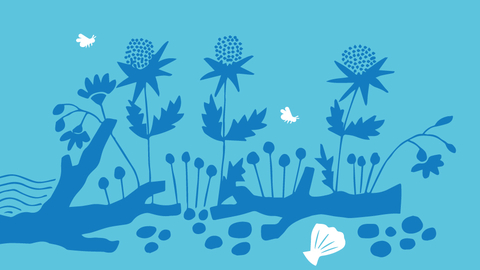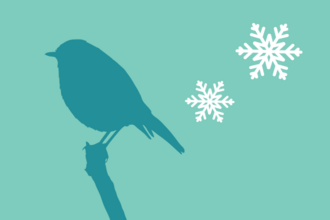
How to make a costal garden
How to make a coastal garden
The salt-laden winds that buffet our shores cause damage to plant limbs and stunt growth. Plants have to be specially adapted to cope with the salt, which causes leaf-burn and defoliation. The soil is unlikely to be first-rate either: light, sandy, lacking in nutrition, unable to retain moisture and probably containing a high salt content. Rainfall can also vary from meagre to copious, depending on which side of the country you live on.
The good news is, with the right plants, there’s no reason why our maritime regions should not enjoy the same wealth of wildlife as the rest of the country. The insects, birds and other creatures to be found along our shores have all adapted to the often harsh environment, and many are exclusive to this particular habitat. For instance, some birds, butterflies and moths make the flight across the North Sea and the English Channel to set down in desirable habitats on our east coast.
The insects, birds and other creatures to be found along our shores have all adapted to the often harsh environment.
Planning your coastal garden:
Choose well and plant in the right place and your garden will thrive. Plants that are suited to biting, salt-laden winds and free-draining soil or gravel will do best. Those with small, leathery, silvery or glossy leaves tend shrug off the windy, salty onslaught. Shrubs and perennials, such as sage, rosemary, lavender, holly and buddleia, will also withstand severe conditions.
As in any other garden environment, if you provide food, shelter, a source of water and aren’t too tidy, the wildlife will come flocking. For the coastal garden, the most important of these is shelter. Once established, resilient trees and shrubs will act as a windbreak, making all the difference to your visitors.
Establishing your coastal garden:
When selecting plants, a clue to their seaside-worthiness is often in their Latin name. Those with the specific epithet (the second part of the Latin name) ‘maritima’ or ‘littoralis’ will have coastal tendencies. For instance:
- Sea campion Silene maritima
- Sea holly Eryngium maritimum
- Sea kale Crambe maritima
- Thrift Armeria maritima
Shrubs and trees that are good for hedges and shelterbelts are tamarisk, oleaster, escallonia, holly and rowan. Poplars are quick-growing, which is useful when trying to establish a wind break.
Hebes, buddleia, sedums, ivy, cotoneaster and heather will attract butterflies, bees and birds without being out of their comfort zone.
Maintaining your coastal garden:
Even in areas with higher than average rainfall, the poor soil quality and higher levels of salt can cause increased moisture loss. Mulch the beds to try to prevent as much moisture loss as possible. Digging in some well-rotted manure will also help sandier soils to conserve moisture.
Feeding plants, especially young ones, is very important. Gather seaweed for a handy fertiliser and dig it straight into the soil, making sure you wash off any surface salt first.
Poor, light soil can be prone to erosion by the wind. Use plants with fibrous root systems, such as grasses, to prevent the soil blowing away.
Top tips
- When putting in new plants, especially shrubs and trees, don’t be tempted to buy large container-grown plants. Younger plants will adapt to the environment as they establish and will be happier in the long run.
- Piled-up driftwood gathered from the beach makes snug homes for small creatures.
Suggested plants
- Bell heather Erica cinerea
- Bladder campion Silene vulgaris
- Buddleia Buddleja davidii
- Cotoneaster spp.
- Escallonia spp.
- Fuschia spp.
- Heather (aka ling) Calluna vulgaris
- Hebe spp.
- Holly Ilex aquifolium
- Ivy Hedera helix
- Midland hawthorn Crataegus laevigata
- Oleaster Elaeagnus angustifolia
- Poplar Populus spp.
- Rowan (aka mountain ash) Sorbus aucuparia
- Sea buckthorn Hippophae rhamnoides
- Sea campion Silene maritima
- Sea holly Eryngium maritimum
- Sea kale Crambe maritima
- Sedum spp.
- Tamarisk Tamarix ramosissima
- Thrift (aka sea pink) Armeria maritima



